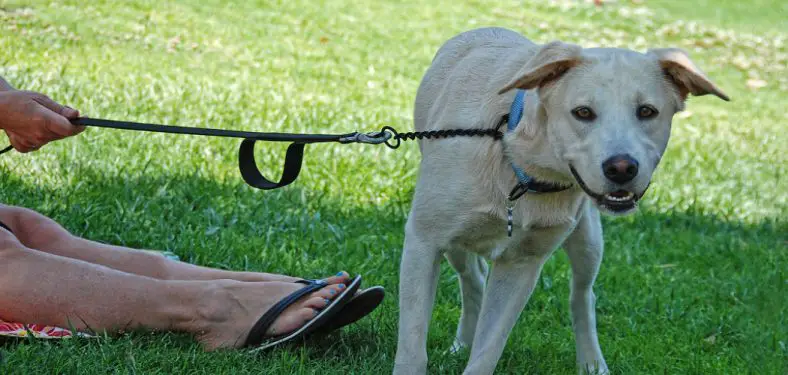Are you struggling to walk your reactive dog? Do you feel like you’re always in a battle to keep them under control? If so, this blog post is for you! In today’s post, we’ll be discussing how to walk a reactive dog. We’ll cover everything from the basics of leash training to top tips for keeping them calm and focused. So read on for all the information you need to know!
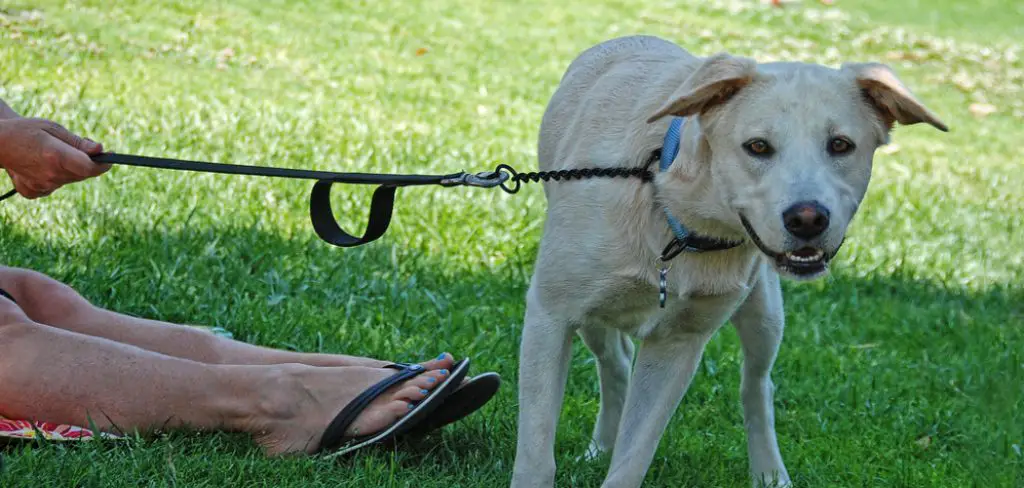
Contents
What is a Reactive Dog?
First things first, let’s define what we mean by “reactive.” A reactive dog tends to bark, lunge, growl, or snap when they encounter other animals or people. This behavior is often rooted in fear or insecurity and can be triggered by anything from a person wearing a hat to another dog being nearby.
While it may be tempting to coddle a reactive dog and try to protect them from the things that scare them, this will only aggravate the problem. Instead, the goal should be to help your dog cope with their reactions healthily.
Why Should You Walk with A Reactive Dog?
A reactive dog is a dog that becomes over-stimulated easily, often resulting in aggressive or defensive behaviors. While walking a reactive dog may seem daunting, there are actually many benefits to doing so. For one, it can help the dog to burn off excess energy and work off any pent-up frustration.
Additionally, walking with a reactive dog can help socialize and desensitize them to the things that trigger their reactions. With patience and consistency, walking with a reactive dog can be a rewarding experience for both owner and pet.
7 Ways to Follow on How to Walk a Reactive Dog
It’s no secret that dogs are man’s best friend. They provide us with companionship, unconditional love, and hilarious moments that always seem to brighten our day. But what happens when your four-legged friend isn’t so friendly?
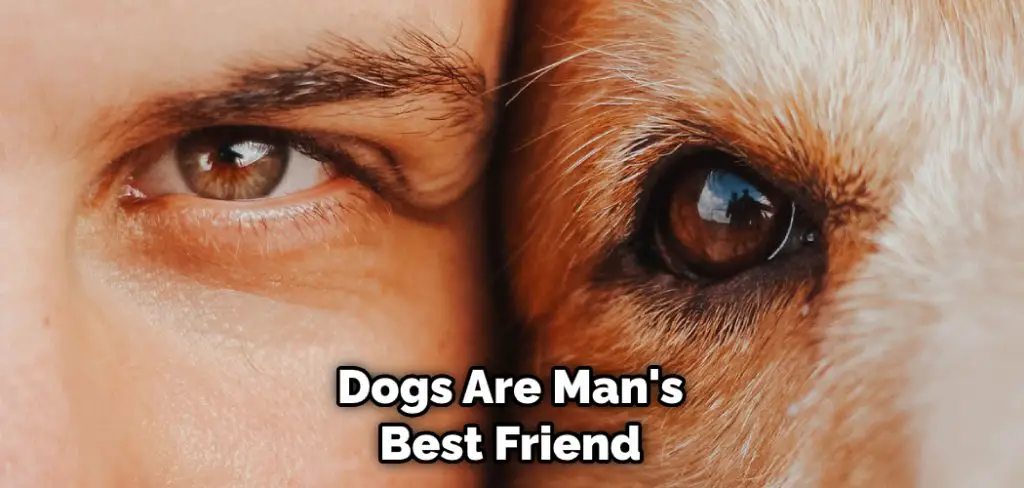
If your dog is reactive, it can make walks and interactions with other people and animals a nightmare. But don’t worry; there are things you can do to help your dog feel more comfortable and calm.
1. Keep Your Dog on A Leash at All Times
This is the most important rule when it comes to walking a reactive dog. A reactive dog becomes overly excited or stressed in the presence of other dogs, people, or animals. This can lead to aggression or even biting. Keeping your dog on a leash can prevent them from getting too close to other dogs or people and reduce the chances of an incident occurring.
2. Avoid Eye Contact with Other Dogs
Making eye contact with another dog can be interpreted as a challenge, which can trigger a reaction from your dog. If you see another dog while out walking, try to avoid making eye contact and instead keep your focus on your own dog.
3. Do Not Approach Other Dogs
If you see another dog while out walking, do not approach them. This can be interpreted as threatening behavior and may cause the other dog to become reactive. Instead, give the other dog a wide berth and continue on your way.
4. Be Aware of Your Body Language
Your body language can influence how your dog reacts to their surroundings. If you appear stressed or anxious, your dog may mirror those emotions and become reactive. It is important to remain calm and confident when walking a reactive dog to help keep them calm as well.
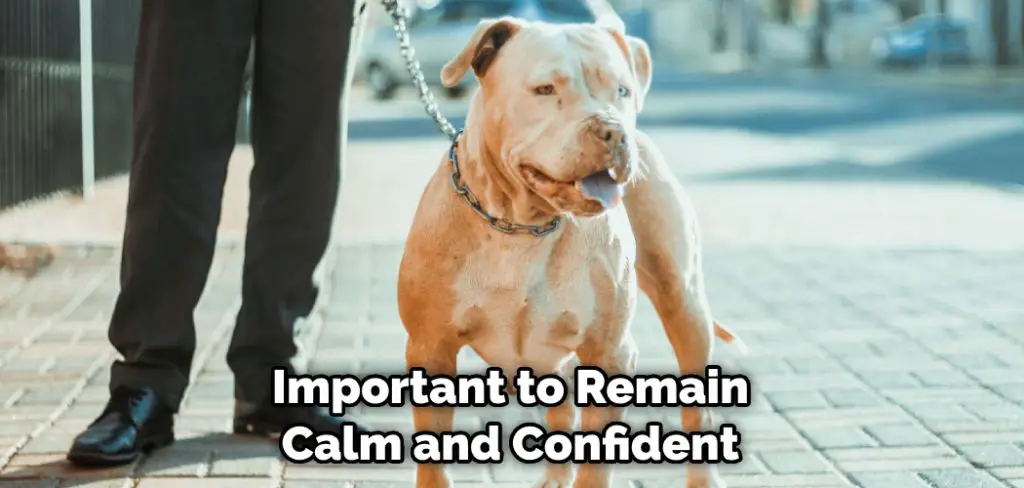
5. Be Prepared for Anything
When walking a reactive dog, it is important to be prepared for anything that might happen. This means having a firm grip on the leash, being aware of your surroundings, and being ready to move away from other dogs or people if necessary. It is also a good idea to carry treats with you to help distract or calm your dog if needed.
6. Be Patient
Walking a reactive dog takes patience and time. You may not be able to walk as far or as fast as you would like, but it is important to take things slowly and let your dog get used to its new environment and routine at their own pace.
7 Have Realistic Expectations
It is important to have realistic expectations when walking a reactive dog. There may be some days where your dog does great and others where they struggle more. It is important to remain patient and consistent in your efforts; eventually, you will see progress.
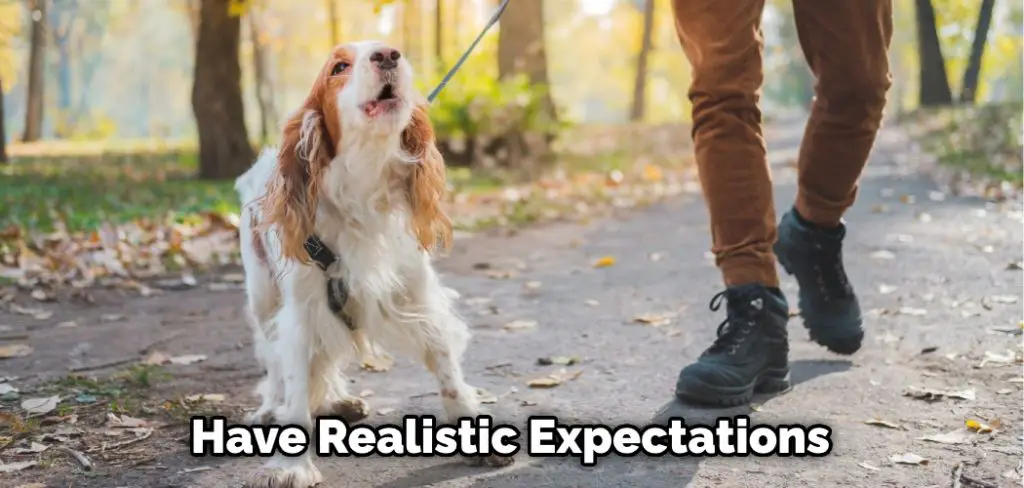
That’s it! You’ve now learned how to walk a reactive dog. Following these tips can help your dog feel more comfortable and confident on walks and in new environments. Remember to be patient and have realistic expectations, and you and your furry friend will enjoy stress-free walks in no time.
How to Know if Your Dog Is Reactive
Dogs are social creatures that enjoy being around people and other animals. However, some dogs may become reactive when encountering other dogs or people. This can happen for several reasons, such as fear, insecurity, or mistrust. If your dog is reactive, you may notice that they bark excessively, lunge toward other dogs or people, or try to hide behind you.
Reactivity can be dangerous for your dog and others, so it’s important to seek professional help if you suspect your dog is reactive. A certified animal behaviorist can help you to identify the cause of your dog’s reactivity and develop a plan to desensitize them to the trigger.
Then, with patience and training, you can help your dog to overcome its reactivity and enjoy a happy, healthy life.
How to Prevent Your Dog from Becoming Reactive
It can be tough to deal with a reactive dog. Reactive dogs tend to overreact to stimulations in their environment. This can result in a dog that is incessantly barking, lunging, or even biting. While it might seem like there’s no hope for a reactive dog, there are several things you can do to help prevent your dog from becoming reactive in the first place.
One of the most important things that you can do is to socialize your dog early and often. This means exposing them to as many different people, animals, and situations as possible. The more exposure they have, the less likely they are to become reactive when encountering something new.
It’s also important to pay attention to your dog’s body language. If you see them start to get tense or anxious, remove them from the situation before they have a chance to react. By doing this, you’ll help them to stay calm and avoid getting overwhelmed.
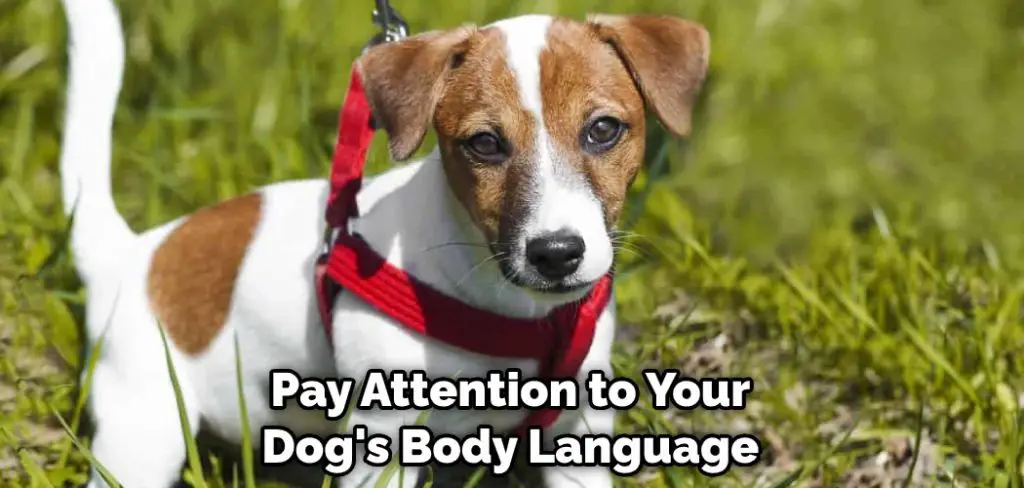
Finally, ensure you’re providing your dog with plenty of exercise. A tired dog is much less likely to become reactive than one that is full of energy. So take them for long walks, runs, and hikes, and play games with them to help them burn off steam.
Following these tips can help prevent your dog from becoming reactive and making things difficult for everyone involved.
How to Handle a Reactive Dog in Public
A reactive dog becomes agitated or fearful in the presence of other dogs, people, or animals. While taking a reactive dog out in public can be challenging, it is important to do your best to socialize them as much as possible. With proper management and training, your reactive dog can learn to cope with their fear and enjoy spending time with you in public places.
The first step in taking your reactive dog out in public is to find an area where they will feel comfortable. If there are too many stimuli for your dog to handle, it will likely become overwhelmed and react negatively. Once you find a suitable location, gradually introduce your dog to the other dogs or people nearby. If your dog becomes agitated, divert their attention with treats or toys.
Finally, rewards your dog for remaining calm in the presence of other dogs or people. With patience and practice, you can help your reactive dog overcome their fear and enjoy spending time in public places.
You Can Check It Out To Treat Kennel Nose at Home
How to Train Your Dog Not to React on Walks
Dogs are social creatures that thrive on interaction with their pack, which includes their human family. However, not all interactions are positive ones. Dogs can sometimes become reactive on walks, barking and lunging at other dogs or people.
While this behavior is often motivated by fear or anxiety, it can also signify excitement or aggression. Whatever the cause, it’s important to nip reactivity in the bud before it becomes a habit.
The first step is to identify the trigger of your dog’s reactivity. This could be another dog, a person wearing a hat or sunglasses, or even a child on a bicycle. Once you know what sets your dog off, you can begin working on counter-conditioning and desensitization exercises.
For example, if your dog is afraid of other dogs, you can slowly introduce them to canine friends in controlled settings while providing lots of treats and praise. With time and patience, your dog will learn that there’s nothing to fear from the triggers of their reactivity and can enjoy calm walks with the rest of the pack.
Conclusion
Walking a reactive dog doesn’t have to be impossible. With a little patience, some high-quality treats, and these helpful tips, you’ll be on your way to enjoying many peaceful walks with your furry friend in no time! Thanks for reading our post about how to walk a reactive dog.

